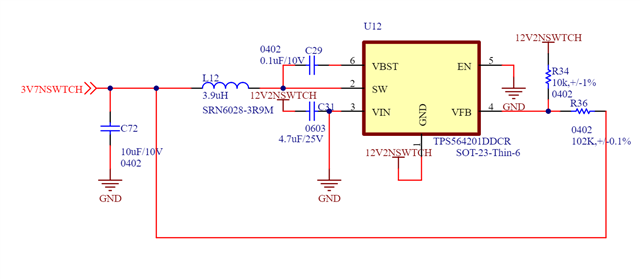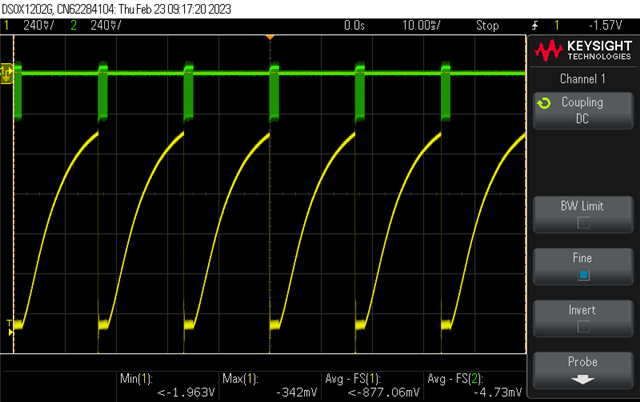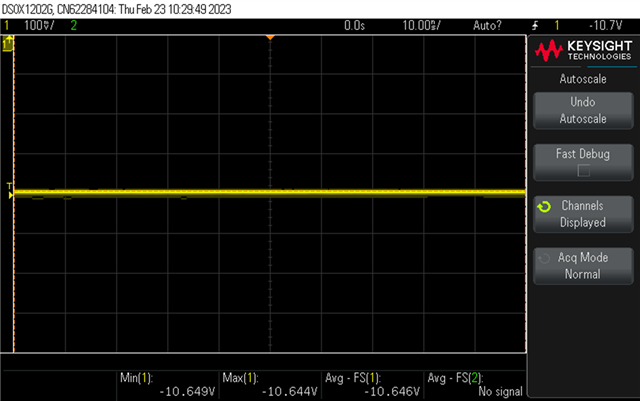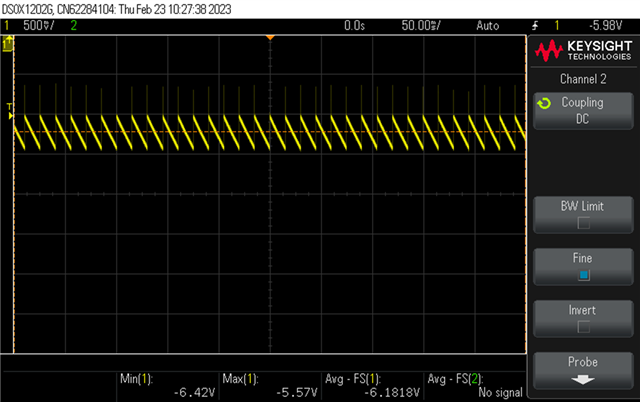Other Parts Discussed in Thread: TPS564208, , TPS562207
Hello,
I am working with this part, TPS564201DDCR, and I've been having some difficulties with the part. Our designer has generated -12V from 12V using an inverting DC-DC controller, and then used multiples of this step-down converter, each referenced from -12V as the device's ground (pin 1) and ground as its input (pin 3), to generate a series of smaller negative voltages (-3.2, -3.7, & -6.3). I've attached an image of the switcher or the -3.7V output that we have designed.
In general, we used the typical application of the device described 8.2, except we designed our gain such that we get -3.7 from -12. This generate the approximate expected voltage with the associated ripple from the having load output load attached to the device, suggesting that its possible to step-down from ground to -3.7V with this device
The issue with this design is that whenever a load is attached from a higher voltage than the output. The switcher rises to ground an say there, with no switching. When a load is attached to a lower voltage however, the device appears to operate as if it was a positive voltage load to ground.
I have looked through the documentation for this device and I haven't seen anything that can allow it to act as a current sink, such that we have a load from ground to our -3.7V switcher output.
Is this design possible with this device? I have heard mixed answer from my colleagues, and I would like to know if this is possible to sink, and how it can be implemented.




